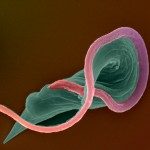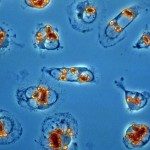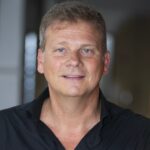Link to Pubmed [PMID] – 32975503
Link to DOI – 10.1099/mgen.0.000444
Microb Genom 2020 10; 6(10):
Although several studies have investigated genetic diversity of Leishmania infantum in North Africa, genome-wide analyses are lacking. Here, we conducted comparative analyses of nuclear and mitochondrial genomes of seven L. infantum isolates from Tunisia with the aim to gain insight into factors that drive genomic and phenotypic adaptation. Isolates were from cured (n=4) and recurrent (n=3) visceral leishmaniasis (VL) cases, originating from northern (n=2) and central (n=5) Tunisia, where respectively stable and emerging VL foci are observed. All isolates from relapsed patients were from Kairouan governorate (Centre); one showing resistance to the anti-leishmanial drug Meglumine antimoniate. Nuclear genome diversity of the isolates was analysed by comparison to the L. infantum JPCM5 reference genome. Kinetoplast maxi and minicircle sequences (1 and 59, respectively) were extracted from unmapped reads and identified by blast analysis against public data sets. The genome variation analysis grouped together isolates from the same geographical origins. Strains from the North were very different from the reference showing more than 34 587 specific single nucleotide variants, with one isolate representing a full genetic hybrid as judged by variant frequency. Composition of minicircle classes within isolates corroborated this geographical population structure. Read depth analysis revealed several significant gene copy number variations correlating with either geographical origin (amastin and Hsp33 genes) or relapse (CLN3 gene). However, no specific gene copy number variation was found in the drug-resistant isolate. In contrast, resistance was associated with a specific minicircle pattern suggesting Leishmania mitochondrial DNA as a potential novel source for biomarker discovery.


